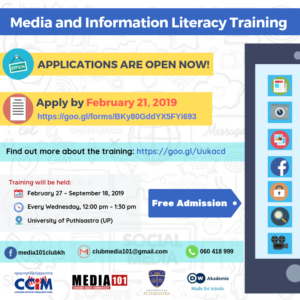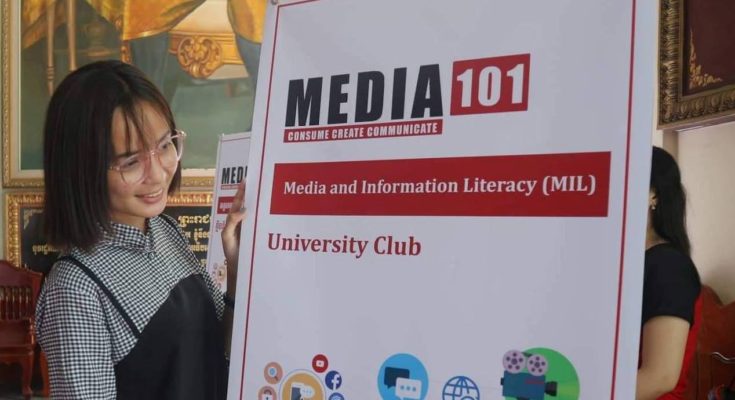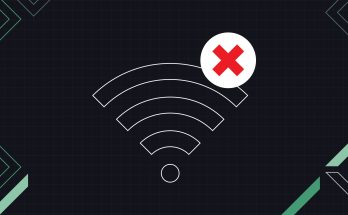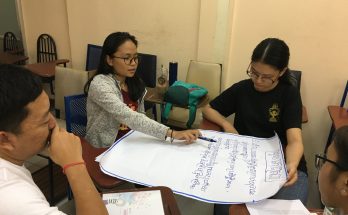In fact, Media and Information Literacy (MIL) has become one of the most crucial skills, which people around the world should pay their attention to. Basically, it enables people to access the media, analyze the content, create the messages, reflect on existing information, and take action with media. As the technology is continuously progressing, accessing to media becomes easier and faster.
In Cambodia, currently people especially youths would prefer social media like Facebook, Instagram, YouTube, rather than the traditional media like TV, radio, or newspaper because in this modern society, they believe that smartphone can give them everything.
The youths seem to spend much time online and actively participate in sharing, commenting, posting, and reacting to a certain trend because of the interesting contents, entertaining videos, beautiful pictures, and fun memes. Of course, it might be to entertain, however, the risks definitely come along such as online harassment, information disorder, and digital security.
 Witnessing these media problems out there, Media 101 Club was established in 2018 under a joint project implemented by the Cambodia Center for Independent Media (CCIM) and Deutsche Wella Akademie (DWA) in collaboration with Pannasastra University of Cambodia (PUC) and University of Puthisastra (UP).
Witnessing these media problems out there, Media 101 Club was established in 2018 under a joint project implemented by the Cambodia Center for Independent Media (CCIM) and Deutsche Wella Akademie (DWA) in collaboration with Pannasastra University of Cambodia (PUC) and University of Puthisastra (UP).
Media 101 Club is a platform where students can learn, share, discuss, and improve their media and information literacy.
Interestingly, the method of training is not lecturing, but active participatory approach, which allows student to have fun whilst learning. Students actually not only enjoy with so many various topic games with professional trainers, but also get a chance to think, discuss, reflect and produce their media products with their smartphones on many certain topics, which are already set. Those topics include media in general, assessing media information, creating pictures, social media, and video’s rules and techniques.
The ultimate purposes of these topics are to enable students to describe the media landscape, distinguish different types of content, compare media characteristics, examine how and why media is used. Those topics, furthermore, allow students to discover the quality of information and search engines, find out the quality criteria for journalism, interpret a picture, describe a composition rules in photography, photo editing apps, identify the characteristic and impact of social media, and eventually produce their own videos.
More importantly, students can distinguish fake news, misinformation, malinformation, disinformation, hate speech, cyber bullying, and privacy and security as well.
The MIL trainings are conducted at UP and PUC in weekly and weekend basis, respectively. So far, Media 101 Club has completed three batches of MIL trainings at PUC, and one batch at UP. The club recruits 20 students per batch of training in one term, which lasts for 3 to 4 months.
Currently, the club is running the trainings at PUC South Campus on Sunday afternoon with 20 students, including monks, who come from different majors.
As expected, students are eager to learn and share what they have experienced in using media, therefore, it shows the positive change in media knowledge of Cambodian youths. (Ms. Huot Salinit, Project Officer)
[ngg src=”galleries” ids=”1″ display=”basic_thumbnail” thumbnail_crop=”0″]


